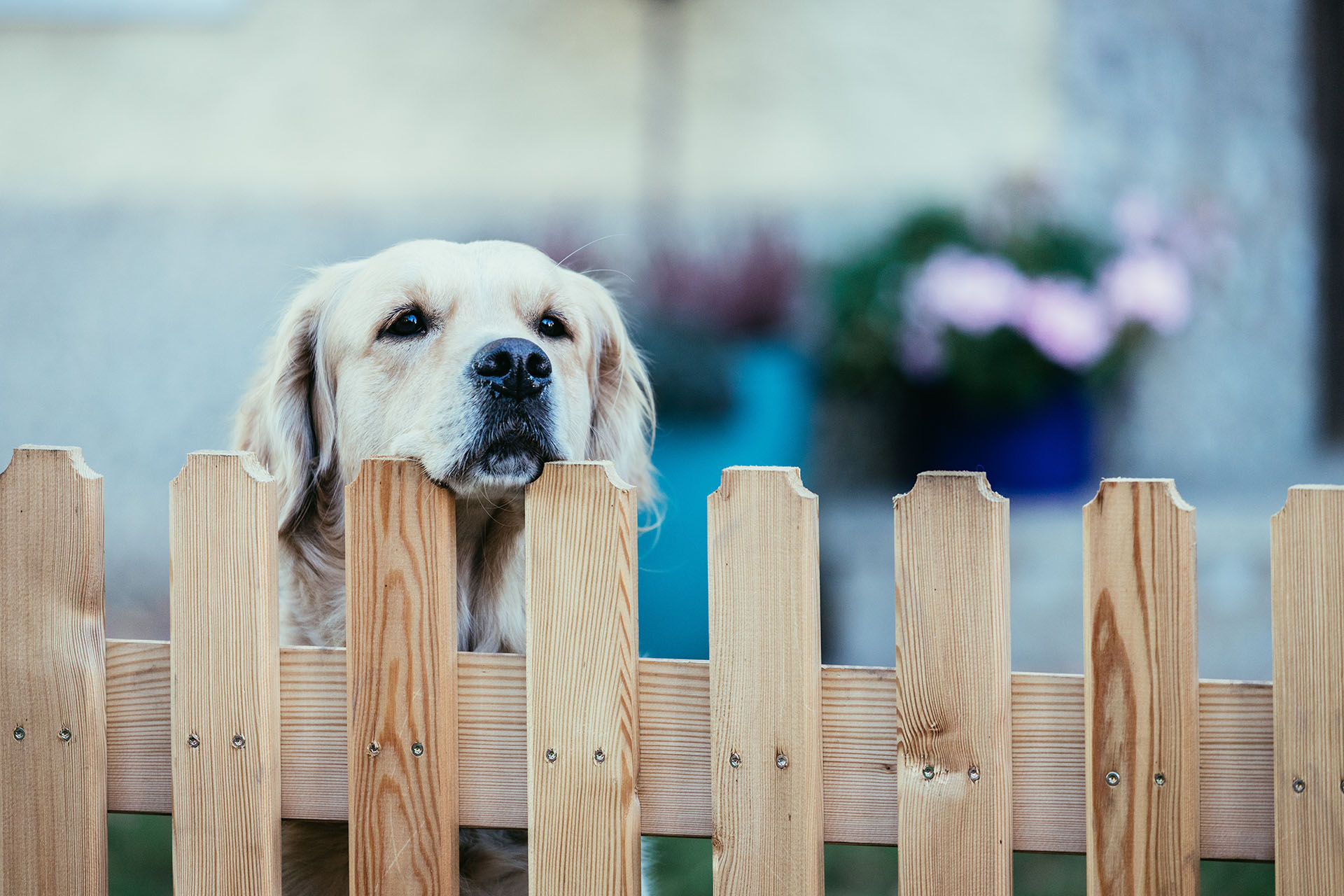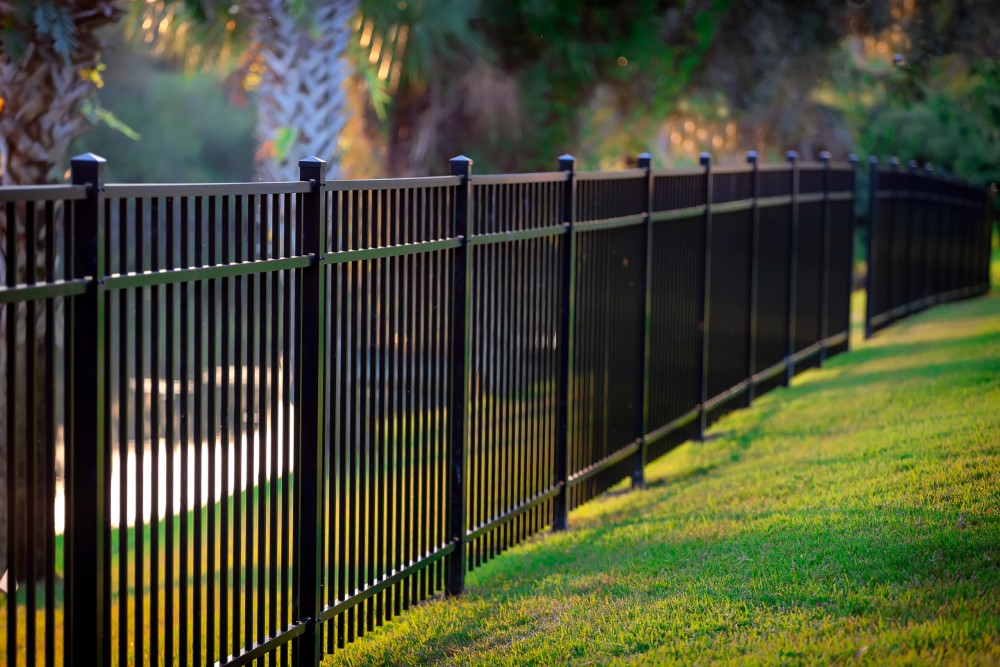
What Is the Best Material for a Dog Fence?
They say that dogs are man’s best friend. But that friendship requires some care and attention. If you have a high-energy dog, large or small, you’re probably very familiar with their need to run. Whether it’s tugging at their leash on a stroll around the block or making a run for it when the front door opens, some dogs just can’t be contained. A backyard is a great place for your dog to get outdoors and work off some of that energy. But if your yard isn’t properly secured, you could be chasing your dog down the block before long. If you want your dog to have the freedom to run and play in your yard, you need an effective dog fence. At Bravo Fence Company, we build fences for all kinds of dog owners, and we’ve got some experience keeping your furry friends from escaping. But every dog and every homeowner is unique, so there is no one-size-fits-all solution. Here’s our rundown of some of the best materials for a dog fence.
Is Your Fence Tall Enough?
The first thing most pet owners need to consider when planning a fence to contain their dogs is how high it needs to be. For small breeds, a four-foot fence may be sufficient. However, larger dogs can easily jump a four-foot fence, so a standard six-foot fence may be the answer. If you have a particularly large breed or your dog is a standout jumper, you could opt for an eight-foot fence but check local regulations first. Some municipalities and homeowners associations limit the height of residential fences.
When considering the height of your fence, jumping is not the only concern. Some dogs are excellent climbers, as well. Depending on the material, a tall fence may not be enough to contain a climber. In general, climbers have a harder time with smooth fences, like a wood or vinyl privacy fence. If your dog is still getting out, you could add rollers to the top. A roller is usually a PVC pipe—it can be painted to match your fence—suspended by a wire or metal pipe. When the dog’s paws hit the tube, it rolls back toward them, making it nearly impossible to climb.

Chain Link Fence
Chain link is a durable and cost-effective fencing material. If you have a very large yard that will need lots of fencing, chain link can help keep costs down. Chain link comes in standard sizes from three feet up to six feet. If you need a higher fence, some fence dealers supply chain link that is eight feet or even taller, though it is not as common in residential settings.
While chain link is durable and cost-effective, it has some drawbacks. First, it is not the most attractive fencing option—many people associate chain link with commercial applications or sports facilities. However, there are some ways to dress up residential chain link. Some chain link comes with a vinyl coating that softens the look and adds color. The color options are somewhat limited, but it is a decent way to avoid the industrial look of bare metal. If you aren’t satisfied with the color options of pre-fab vinyl-covered chain link, you can always paint it.
Other options to improve the look of chain link include placing wooden slats through the chain link. Not only do the slats make the fence more attractive, but they also make it more private. However, large dogs crashing to your chain link fence could break slats, so choose wisely.
Finally, it may take time, but many homeowners grow vines and flowers on their chain link fences. Once the plants take over, they can completely hide the fence. You get the look of a beautiful hedge, but the strength and security of chain link. For that matter, you could always just grow and actual hedge right up against the chain link, so the fence is invisible from your backyard.
Another drawback of chain link is that some dogs may be able to climb it. If your dog is a potential climber, you can make it harder to climb by adding slats in the fence or a hedge in front of it. Rollers at the top of the fence are also an option.
One advantage of chain link is that it is an excellent option for pets that dig. If your pet tends to dig under fences, you need to dig a ditch at least 12 inches deep to install the fence. Once the fence is up and the ditch refilled, it will be harder for your pup to dig under. But not every type of fence can be buried. A wood fence would rot if it were buried underground. But chain link is a perfect option for a fence that extends a foot or more underground.
Metal Fences
Whether you choose wrought iron, steel, or aluminum, a metal fence is as elegant as it is classic. But can a metal fence contain a dog? The answer is that it really depends. The main drawback of metal fences for dogs is that most metal fences are made with thin pickets spaced three or four inches apart. A small dog could easily wriggle through that. And a slightly larger dog could try to get through, only to get their head dangerously stuck. So metal fences are really only appropriate for big dogs who absolutely cannot fit their heads between the pickets. Of course, a fence with narrower gaps is also safer, so if you’ve got your heart set on a metal fence, look for styles with smaller gaps.
Another feature that makes metal fences useful for larger breeds is that they are very strong. There isn’t a breed out there that could knock one over or chew through it. So if you have a large dog who throws himself against your fence, a metal fence might be a useful solution. Like chain link, metal can also be buried in the ground to thwart diggers.
Wood Dog Fence
A solidly built wood privacy fence has a lot to offer dog owners. First, unless your dog is exceptionally strong or heavy, they are unlikely to be able to break through a wooden privacy fence. Second, a standard six-foot privacy fence is tall enough to prevent most dogs from jumping over. Another benefit of a wood privacy fence over chain link or metal is that it blocks your dog’s view of the outside. That alone may discourage some of the escape attempts. And if your dog can’t see people and animals outside your yard, they may be less likely to go nuts when one passes. For dogs who go wild over squirrels, people, and other dogs, a privacy fence can have a calming effect.
In addition to keeping your dog in, a wooden privacy fence can keep other animals out. If you live in a place with raccoons, coyotes, and other wild animals, a wooden privacy fence can keep your dog from getting caught up with dangerous wildlife.
One major drawback of wood fences is that they cannot be buried. If you have a dog that lilies to dig, you may need to find another solution. You could bury chicken wire to prevent digging, or you could use stones, gravel, and raised planters to block access to the base of the fence.
Another drawback to wood fences is that over time they can develop cracks and holes that could give a small dog enough space to get out. A wood privacy fence is great for small breeds because there is no space between the pickets, but it needs to be maintained. If your fence is not maintained, small gaps could make it too easy for a small breed to escape.
Vinyl Dog Fence
Vinyl isn’t as classic as wood or metal, but it is a favorite for its low cost and extreme durability. It also makes a great dog fence. Vinyl privacy fences have a smooth surface that is hard to climb, and no gaps for a dog to squeeze through. Unlike wood, vinyl won’t rot or weaken. So even after many years, the fence should be as solid as the day it was installed. A six-foot vinyl privacy fence should be tall enough to keep most breeds from jumping out. Some vinyl fences are also available in eight-foot-high sections for dogs who are exceptional jumpers.
Vinyl’s weak spot is that it can become brittle over time. If your vinyl fence has been around for many years, it could crack under the force of a large dog crashing into it. Vinyl also cannot be buried, so it’s not ideal for dog breeds that tend to dig.
If you’re looking for just the right fence for your dog, contact Bravo Fence Company today. We’ll work with you and your furry friend to find the best fence to suit your needs. With decades of combined experience, our builders have seen it all, and they’re happy to help you find the right solution for your home.
